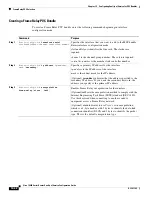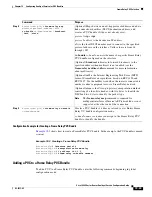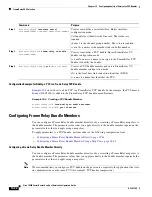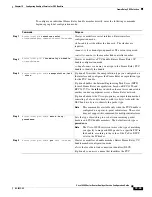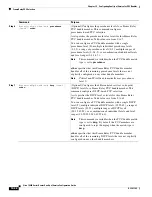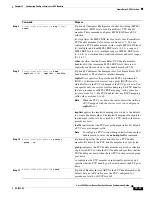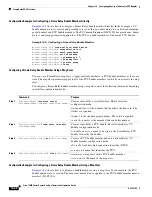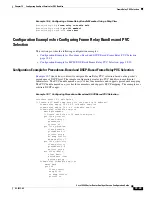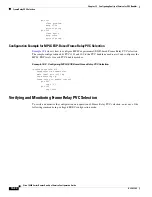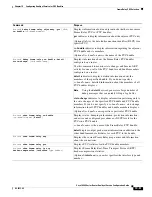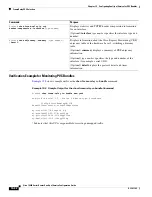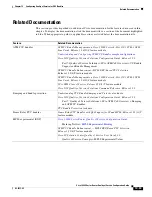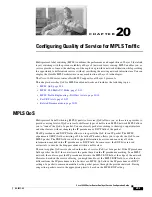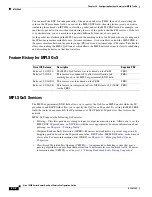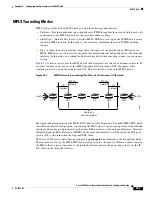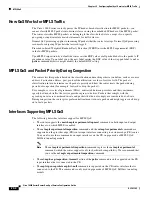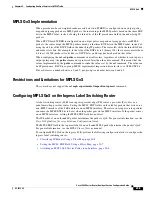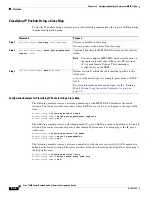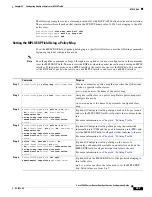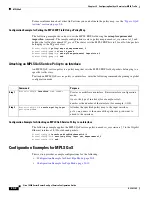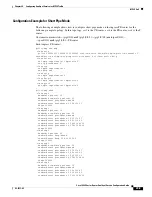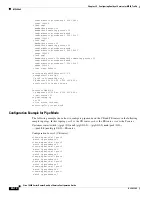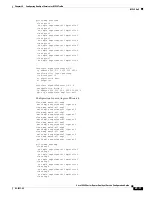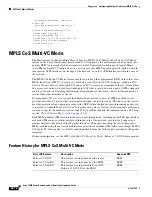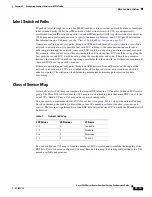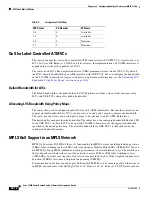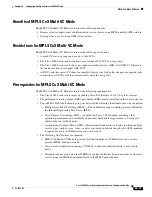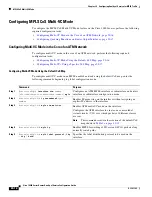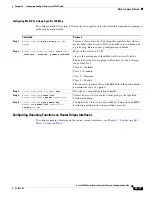
20-2
Cisco 10000 Series Router Quality of Service Configuration Guide
OL-7433-09
Chapter 20 Configuring Quality of Service for MPLS Traffic
MPLS QoS
You can mark the EXP bits independently of the per-hop behavior (PHB). Instead of overwriting the
value in the IP precedence field, you can set the MPLS EXP field, choosing from a variety of criteria
(including those based on IP PHB) to classify a packet and set the MPLS EXP field. For example, you
can classify packets with or without considering the rate of the packets that the PE1 receives. If the rate
is a consideration, you can mark in-rate packets differently from out-of-rate packets.
As the packet travels through the MPLS network, the marking value of an IP packet does not change and
the IP header remains available for use. In some instances, it is desirable to extend the MPLS PHB to
the egress interface between the provider edge (PE) router and customer edge (CE) router. This has the
effect of extending the MPLS QoS tunnel, which allows the MPLS network owner to classify scheduling
and discarding behavior on that final interface.
Feature History for MPLS QoS
MPLS QoS Services
The MPLS experimental (EXP) field allow you to specify the QoS for an MPLS packet while the IP
precedence and DSCP fields allow you to specify the QoS for an IP packet. By setting the MPLS EXP
field, the router does not modify the IP precedence or DSCP field of IP packets as they traverse the
network.
MPLS QoS supports the following QoS services:
•
Policing—Classifies packets according to input or output transmission rates. Allows you to set the
MPLS EXP, IP precedence, or DSCP bits (whichever is appropriate). For more information about
policing, see
Chapter 6, “Policing Traffic.”
•
Weighted Random Early Detection (WRED)—Monitors network traffic to prevent congestion by
dropping packets based on the IP precedence value, DSCP value, MPLS EXP value, or the discard
class value. For more information about WRED, see
Chapter 11, “Managing Packet Queue
Congestion.”
•
Class-Based Weighted Fair Queuing (CBWFQ)— An automated scheduling system that uses a
queuing algorithm to ensure bandwidth allocation to different classes of network traffic. For more
information about CBWFQ, see
Chapter 12, “Sharing Bandwidth Fairly During Congestion.”
Cisco IOS Release
Description
Required PRE
Release 12.0(19)SL
The MPLS QoS feature was introduced on the PRE1.
PRE1
Release 12.0(22)S
This feature was enhanced to allow classification and
marking based on the MPLS experimental (EXP) field.
PRE1
Release 12.2(16)BX
This feature was introduced on the PRE2.
PRE2
Release 12.2(28)SB
This feature was integrated in Cisco IOS Release 12.2(28)SB
for the PRE2.
PRE2

